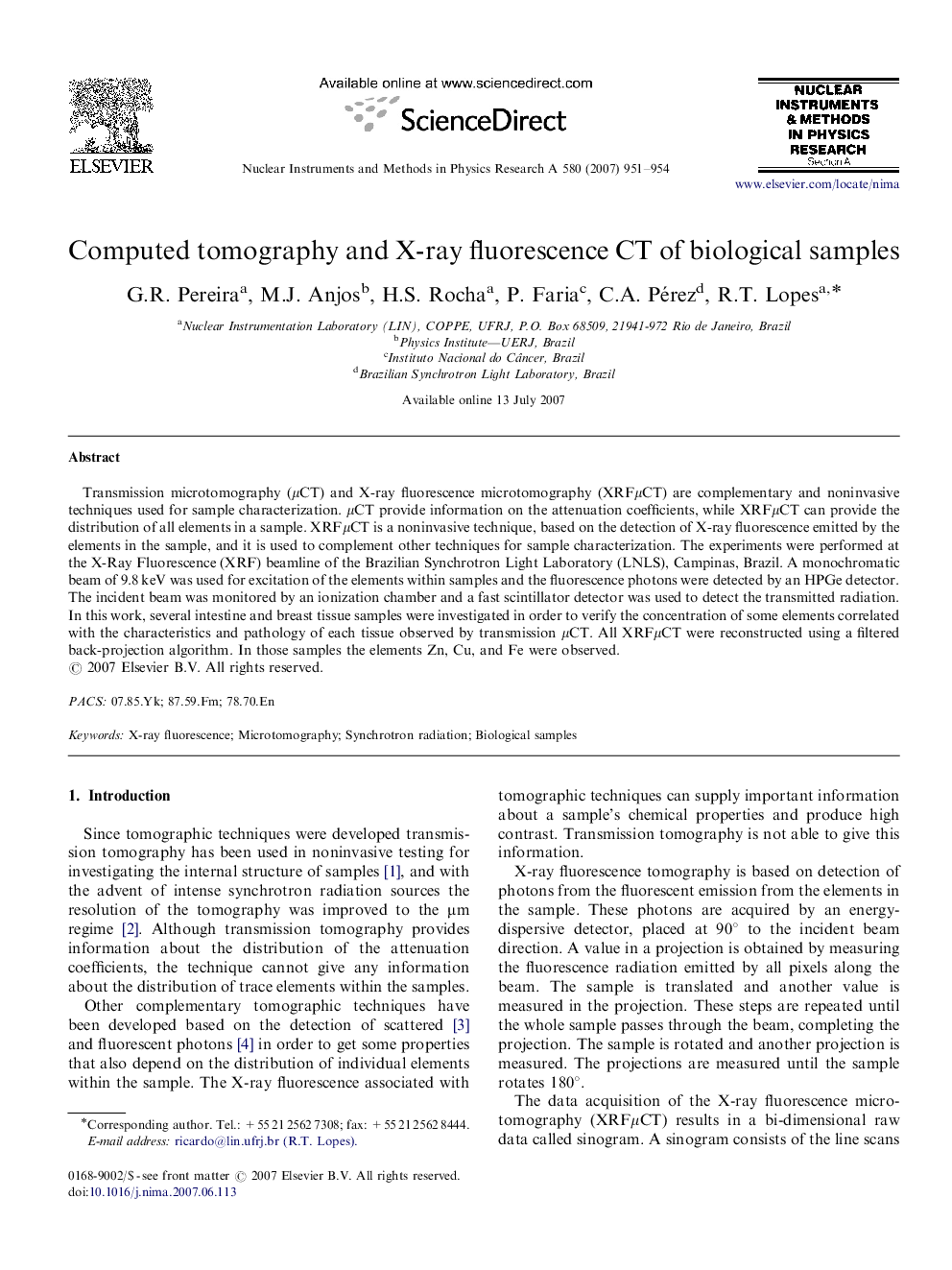| Article ID | Journal | Published Year | Pages | File Type |
|---|---|---|---|---|
| 1830119 | Nuclear Instruments and Methods in Physics Research Section A: Accelerators, Spectrometers, Detectors and Associated Equipment | 2007 | 4 Pages |
Transmission microtomography (μCT) and X-ray fluorescence microtomography (XRFμCT) are complementary and noninvasive techniques used for sample characterization. μCT provide information on the attenuation coefficients, while XRFμCT can provide the distribution of all elements in a sample. XRFμCT is a noninvasive technique, based on the detection of X-ray fluorescence emitted by the elements in the sample, and it is used to complement other techniques for sample characterization. The experiments were performed at the X-Ray Fluorescence (XRF) beamline of the Brazilian Synchrotron Light Laboratory (LNLS), Campinas, Brazil. A monochromatic beam of 9.8 keV was used for excitation of the elements within samples and the fluorescence photons were detected by an HPGe detector. The incident beam was monitored by an ionization chamber and a fast scintillator detector was used to detect the transmitted radiation. In this work, several intestine and breast tissue samples were investigated in order to verify the concentration of some elements correlated with the characteristics and pathology of each tissue observed by transmission μCT. All XRFμCT were reconstructed using a filtered back-projection algorithm. In those samples the elements Zn, Cu, and Fe were observed.
